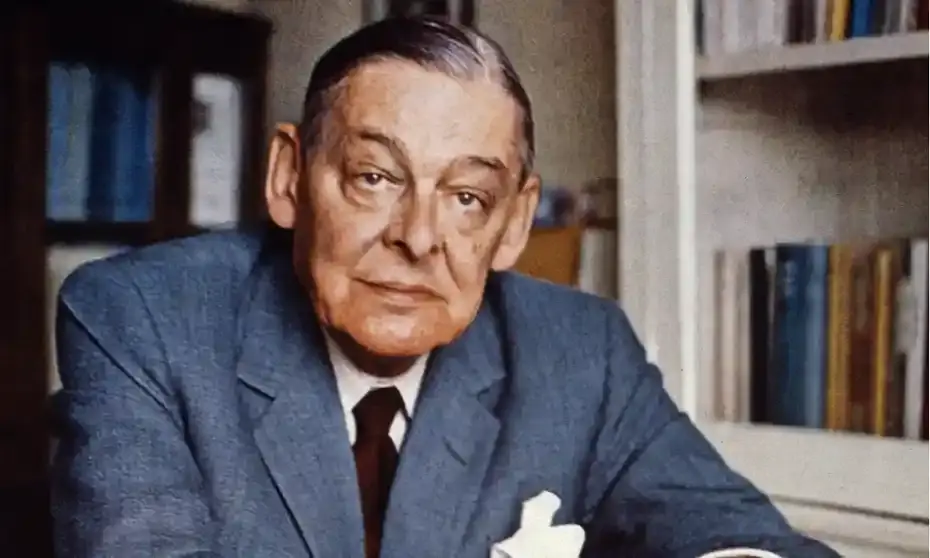
A new biography deftly chronicles the poet’s life from working in the City of London to becoming church warden at a Kensington parish.
“I do not want my biography, if it is ever written – and I hope it won’t – to have anything private in it.” So wrote T.S. Eliot in 1926. All his life, the poet wrestled with personal demons and public duty. The concluding volume of this highly readable two-book biography explains this tension.
The end of the first volume of Robert Crawford’s biography left American poet T.S. Eliot (1888-1965) poised to achieve fame and fortune as author of The Waste Land. Eliot’s revolutionary collage-style poem The Waste Land appeared in 1922, including a mixture of foreign and dead languages, and references to popular culture, literature, history and ancient mythology. Eliot was a great respecter of tradition, even though he chose to use fragments of the past in a radical way. By placing scenes involving mythical characters and Queen Elizabeth I next to working-class women in a pub, Eliot was mingling great figures and everyday scenes, making modern literature both grand and gritty.
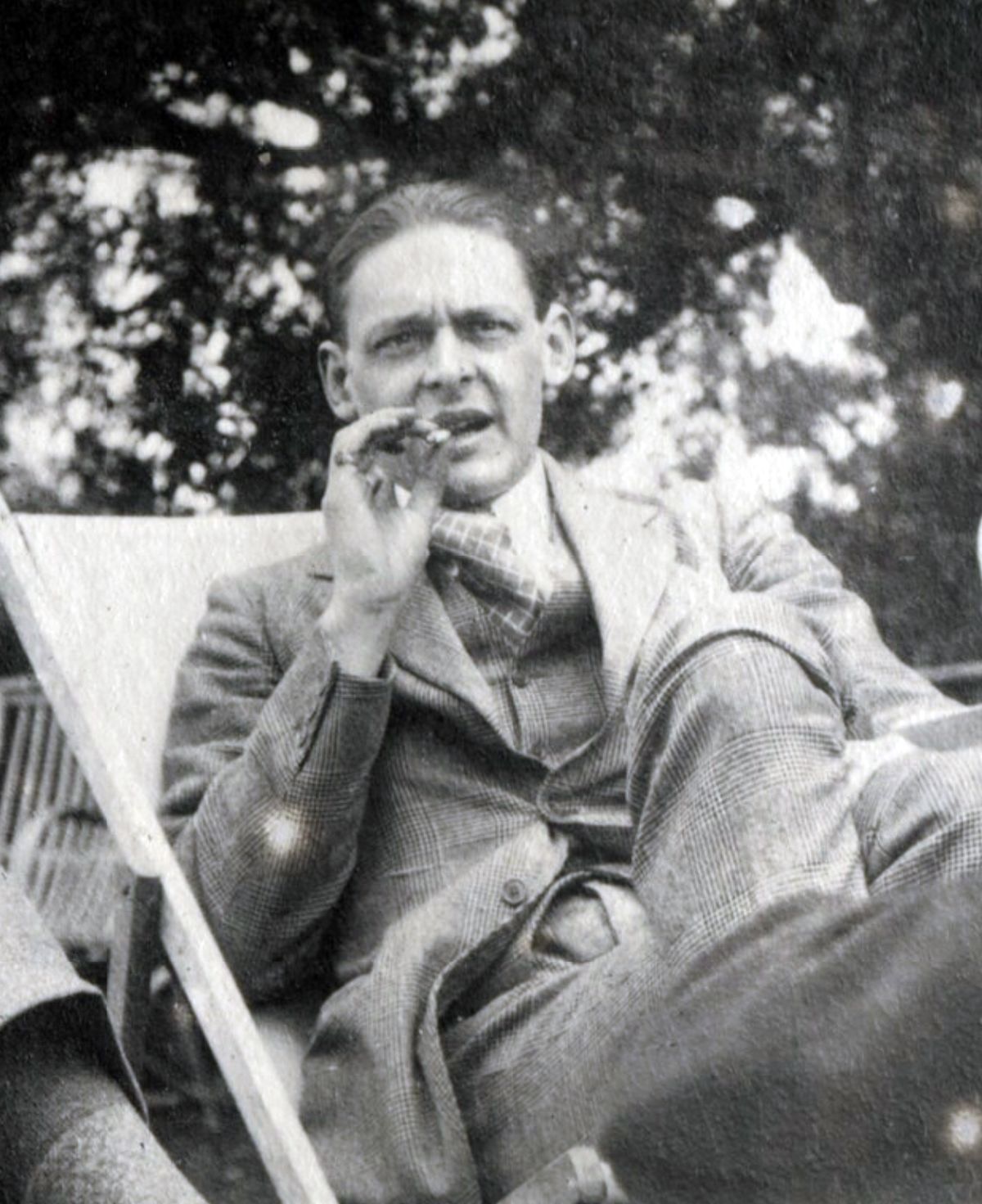
A younger T.S. Eliot, presumably mid-rant
Eliot in his early thirties was at a demanding bank job in the City of London and in a disastrous marriage. His wife Vivien was constantly ill with digestive problems, neuralgia, anorexia and many other complaints, which took her close to death. Even when not bedridden, her nervous anxiety drove Eliot to despair. In her more composed moments, she wrote that she was aware that she had “been simply raving mad”. The couple’s bad health, nervous tension and financial worries (the cost of medical bills, mainly) drove Eliot to a nervous breakdown and Vivien to the brink of suicide. Eliot was drinking heavily and Vivien was addicted to ether (alcohol gas).
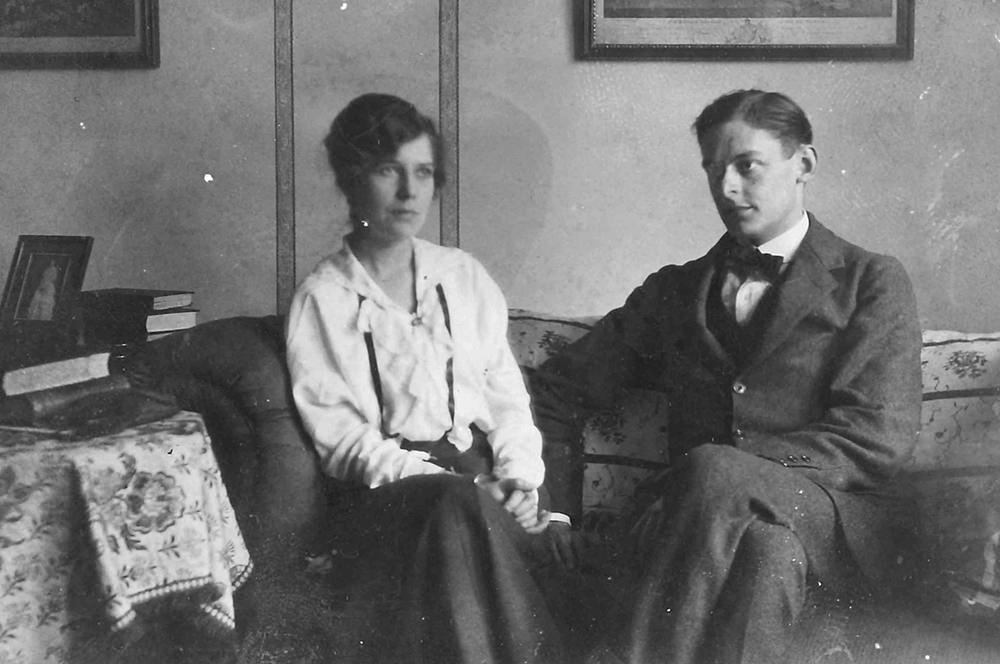
Eliot and wife Vivien
Eliot extracted himself from his job by joining publisher Faber & Faber, which would go on to publish his books. He remained a guiding influence at the firm until his death, gathering for it the best British and American poets, including Auden, Dylan Thomas, Hughes, Larkin and others. The dark side of Eliot was attracted to tales of crime. “Sweeney Agonistes” (1926), an incomplete verse drama, appropriated a cannibalistic murder that happened near the holiday cottage where Vivien was staying. He wrote many essays and reviews but less poetry over the years – virtually nothing in his last 25 years. His last creative work was verse dramas, which were successful at the time but performed much less nowadays.
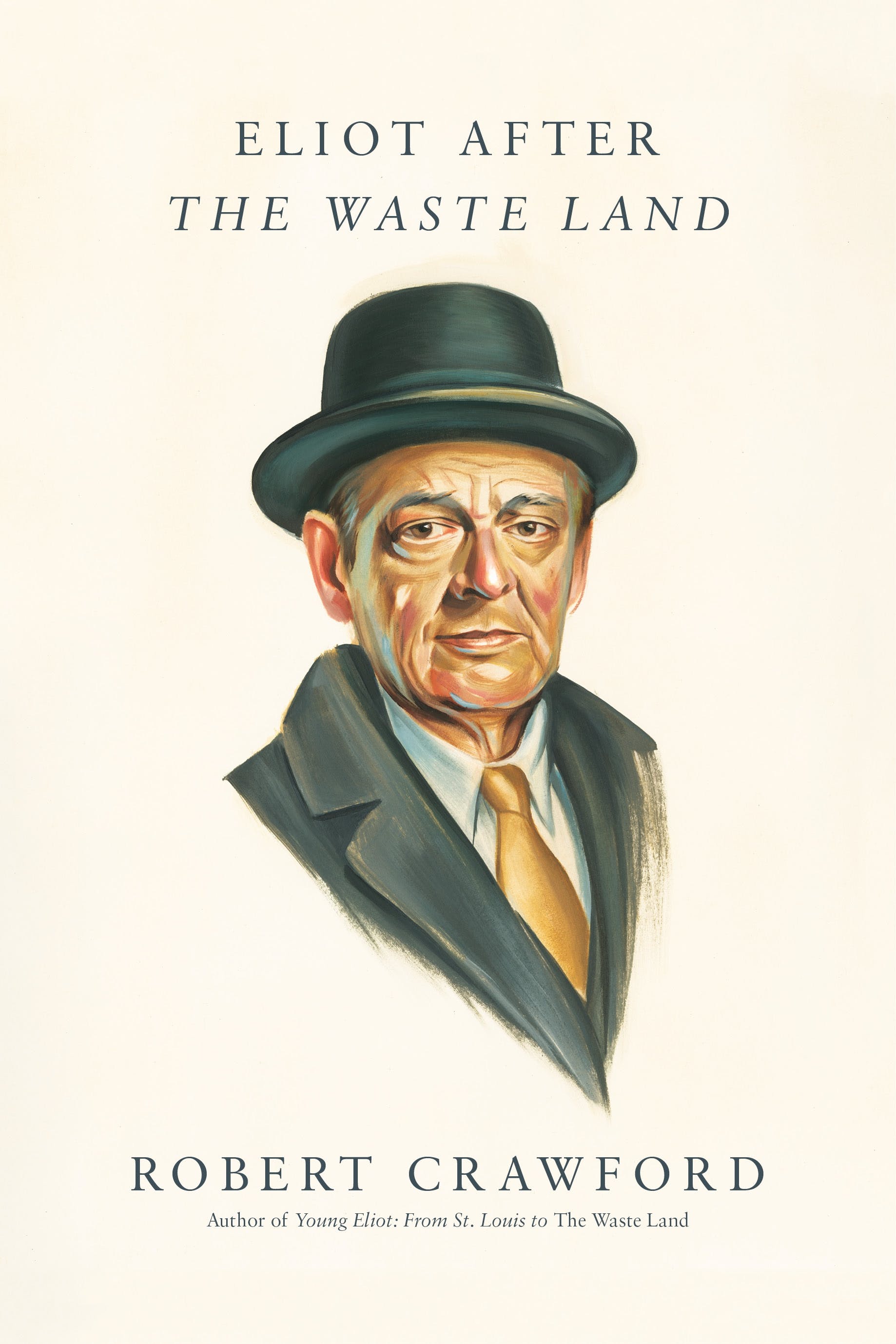
The US edition of Robert Crawford’s biography
Both of the Eliots were initially sympathetic towards fascism, but Eliot wavered between politics and religion as the route out of dysfunctional modern existence. Eliot wrote that individual creators should pledge allegiance to tradition by accepting the authority of a force outside oneself. He converted to Anglicanism in 1927 and his poetry became more infused by religious feeling. It is clear that his change of behaviour was caused not only by personal factors but a commitment to oppose erosion of tradition by materialism, whether that came from fascism, socialism or liberalism.
Eliot left Vivien in 1933, unable to cope with her or care for her. She became increasingly unbalanced and acquaintances dreaded encountering her on London streets. Eventually (in 1938) she was committed to a mental home by her brother, after being found wandering the streets incoherent and paranoid. Eliot thought there was no alternative but he was wracked by guilt. His embrace of the Anglican Church and an austere lifestyle was partly evidence of deep distress at his complicity in a troubling act that extended Vivian’s lifespan at the cost of her freedom.
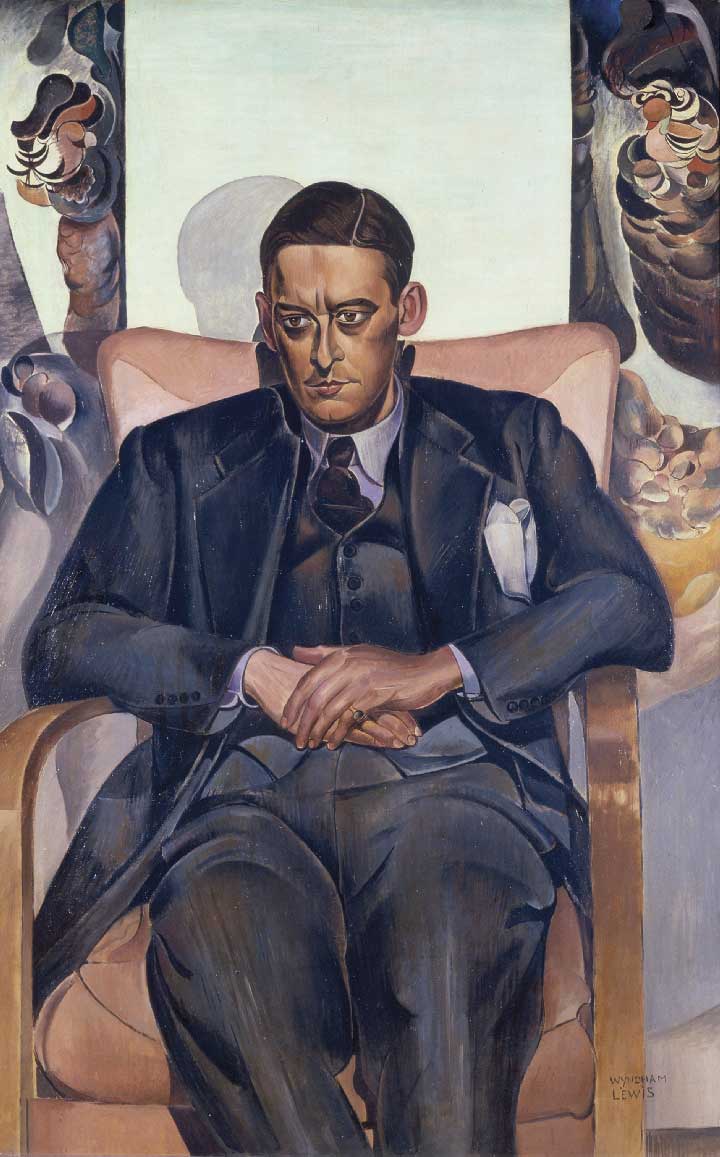
T.S. Eliot, 1938, by Wyndham Lewis
Crawford is the first biographer to have had access to Eliot’s love letters to Emily Hale, an American schoolteacher, which were unsealed by Princeton University Library in 2020. The pair had met before Eliot left for Europe in 1914; his passion for her was rekindled after he had moved to London and married Vivien. Despite regular meetings in the USA and England, the relationship was largely by letters and unconsummated. On religious grounds, Eliot refused to divorce, which caused tension between them.
When Vivien died in 1947, Eliot decided not to marry. Instead, he remained celibate. Yet he did unexpectedly change his mind and marry in 1957. His bride was his 30-year-old secretary (he was 68) and the marriage was a complete surprise to all. Emily was crushed. She retired from teaching and had a nervous breakdown. “Though she regained some considerable spirit in her final years, in the late 1950s friends thought Emily’s life seemed to have drained out of her. It had.” Marriage to Valerie rejuvenated Eliot, despite poor health, and proved happy for both. Eliot became playful, relaxed and almost care free.
In the post-war period, Eliot considered himself a reactionary and monarchist and opposed NGO-sponsorship of an “unimaginable” international culture. Many of the poet’s reservations reflect reactions today against globalisation and progressive politics. Eliot’s poetry has left a lasting mark on culture and it is in this thoughtful, thorough and balanced biography that we are invited to consider whether his political and religious insights might equal his artistic achievements.


